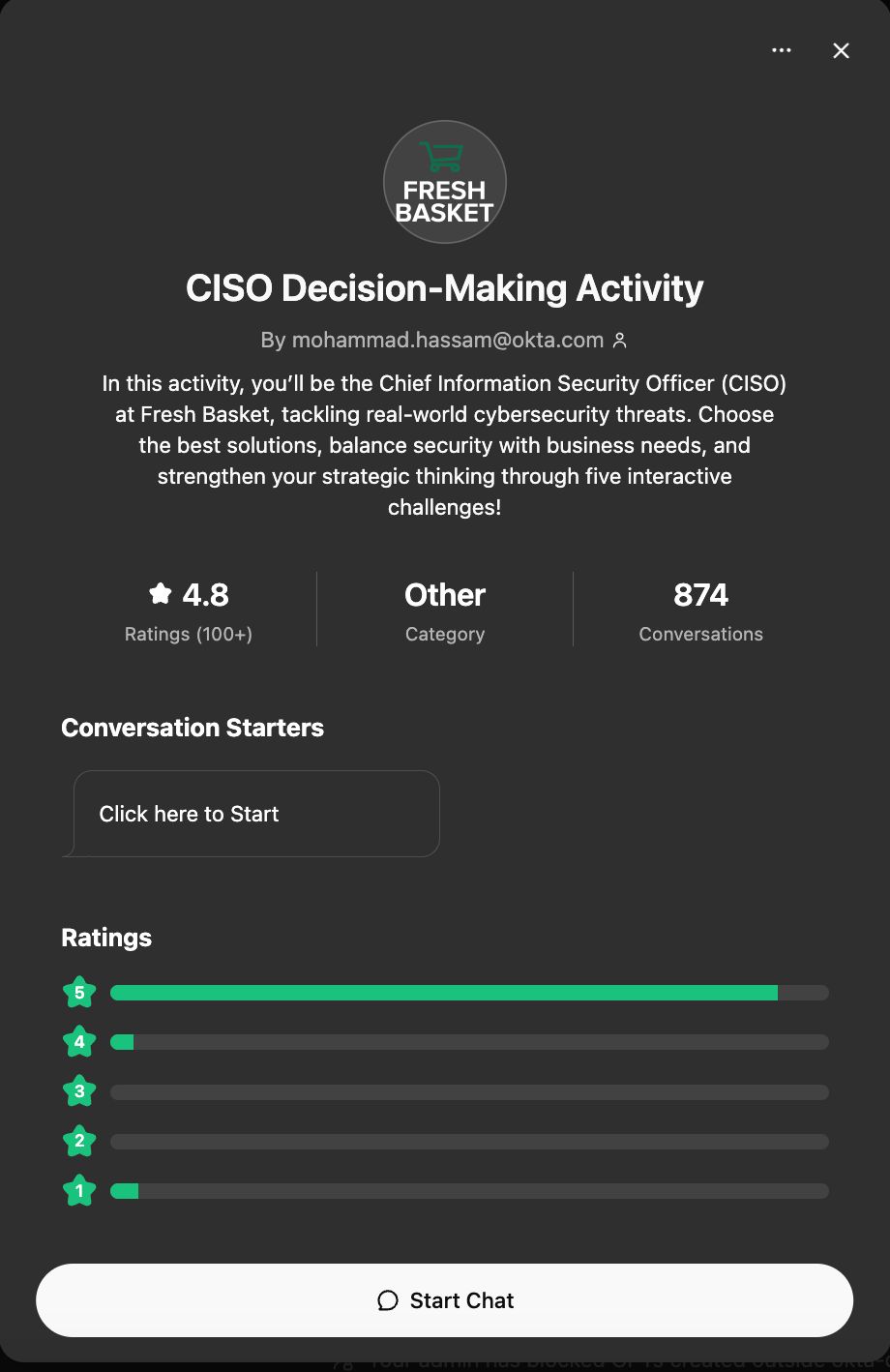
Traditional corporate training methods, particularly in specialized fields like cybersecurity, have long been criticized for their dry, theoretical approach. These training programs often fail to engage employees, leaving them with a knowledge gap that prevents them from applying what they’ve learned in real-world scenarios. This disconnect leads to inefficiencies and missed opportunities. But what if there was a way to make training more immersive, interactive, and practical? That’s exactly what I set out to achieve when I worked with Okta, a leader in identity and access management.
Identifying the Challenge: A Knowledge Gap in Cybersecurity
As a learning and development consultant, I was tasked with helping Okta’s sales team—specifically their Account Executives (AEs)—better understand the decision-making processes of Chief Information Security Officers (CISOs). Historically, AEs struggled to align their sales strategies with the real-world needs of CISOs, which made it difficult to engage effectively with potential clients. This gap in understanding not only impacted the sales process but also hindered Okta’s ability to close deals in the highly competitive cybersecurity market.
The traditional approach to training was not enough. Okta needed a solution that could bridge this gap, allowing AEs to engage in real-world decision-making scenarios and better understand the complexities of cybersecurity threats.
The Solution: AI-Powered Chatbots for Interactive Learning
After evaluating various options, I proposed the development of a custom AI-powered chatbot, utilizing OpenAI’s ChatGPT technology, to create a scenario-based, interactive learning experience for AEs. The objective was to build a training tool that allowed AEs to step into the shoes of a CISO and tackle real-world cybersecurity challenges in a risk-free environment.
Podcast:
Here’s how the chatbot works:
- Role Simulation: Participants assume the role of a CISO, making critical decisions related to cybersecurity.
- Scenario-Based Challenges: The chatbot presents various scenarios, such as network vulnerabilities, data breaches, and insider threats.
- Solution Evaluation: Learners are asked to evaluate several potential solutions, weighing the pros and cons of each option.
- Critical Thinking: The chatbot prompts participants to justify their decisions, encouraging deeper analysis and strategic thinking.
- Immediate Feedback: Real-time feedback is provided, explaining the rationale behind effective and ineffective decisions.
- Iterative Learning: If mistakes are made, the chatbot offers guidance and suggestions, enabling learners to refine their decision-making process over time.
This approach was designed not just to deliver content but to engage learners in a dynamic and immersive training experience.
The Impact: Results and Key Takeaways

When Okta implemented this AI-powered chatbot in their sales training program, the results were compelling. The chatbot facilitated over 900 interactions, with an average satisfaction rating of 4.8/5. These outcomes demonstrated significant improvements in both engagement and learning retention.
Key takeaways:
- The chatbot’s interactive nature led to higher participation and more meaningful learning experiences. Sales reps were more invested in the training, as it closely mirrored the challenges they would face in their roles.
- AEs gained a better understanding of the strategic decision-making processes that drive CISO priorities. This allowed them to tailor their sales pitches to the actual security concerns of their clients.
- By practicing decision-making in a simulated environment, AEs became more confident in discussing cybersecurity topics with clients, ultimately improving the quality of their sales conversations.
- This innovative use of AI-driven training represents a shift from traditional, one-size-fits-all methods toward a more personalized and effective approach to corporate learning.
Expanding Beyond Cybersecurity: The Broader Implications of AI-Driven Training
The success of this chatbot in cybersecurity training led me to explore its potential applications in other areas of corporate learning and development. AI-powered chatbots can be leveraged across a variety of domains, including leadership development, compliance training, and sales negotiation. Here are a few examples of how this technology can be adapted for different learning needs:
- Leadership Development: Managers can practice handling complex leadership challenges, such as conflict resolution and crisis management, in a safe, simulated environment.
- Compliance & Risk Management: Employees can engage with ethical and legal scenarios, testing their knowledge of company policies and compliance regulations.
- Sales Training: Sales teams can refine their objection-handling and negotiation skills by simulating real customer interactions with the AI chatbot.
- Instructional Design: Instructional designers can experiment with different learning strategies and approaches to real-world challenges, receiving feedback on their choices.
The flexibility and scalability of AI-driven training tools make them applicable to a wide range of industries and training needs. This represents a significant shift in how organizations approach employee learning and development.
Conclusion: Why AI-Driven Training is the Future of Corporate Learning
The future of corporate training lies in the ability to create immersive, personalized learning experiences that go beyond traditional methods. AI-powered chatbots offer a scalable solution to this challenge, providing employees with the opportunity to practice decision-making, receive real-time feedback, and engage in scenario-based learning.
The results from Okta’s implementation of this chatbot are clear: AI can transform training by making it more engaging, relevant, and impactful. Whether you are in cybersecurity, leadership, or sales, AI-driven training tools have the potential to revolutionize how organizations develop their teams and drive business outcomes.
If you are looking to modernize your training programs, now is the time to explore the possibilities of AI-driven learning. The future of corporate training is not just about delivering information—it’s about creating an environment where employees can actively engage, learn, and improve.